Top speed 230 km/h Length 9.53 m Retired 1953 Manufacturer Hunting Aircraft | Wingspan 14 m Introduced 1947 First flight 1946 | |
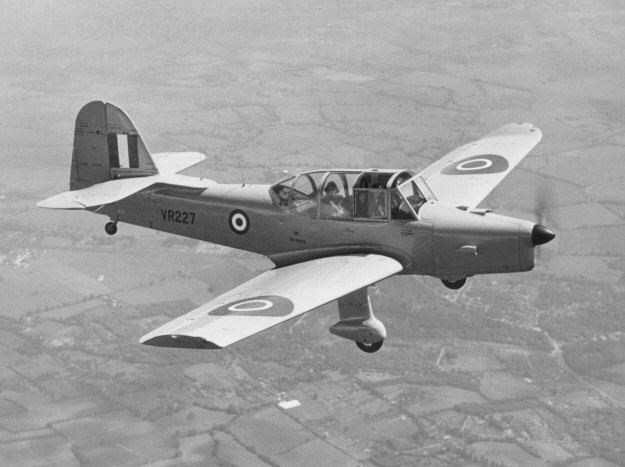 | ||
Percival prentice maiden flight
The Percival Prentice is a basic trainer of the Royal Air Force in the early postwar period. It was a low-wing monoplane with a fixed tailwheel undercarriage. Front seating was in a side-by-side configuration with a rear seat provided.
Contents
- Percival prentice maiden flight
- Percival prentice 1949
- Design and development
- Operational service
- Civilian operations
- Variants
- Operators
- Airworthy survivors
- Aircraft On Display
- Specifications T1
- References
Percival prentice 1949
Design and development
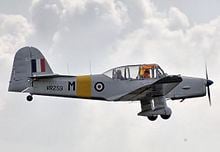
Designed to meet Air Ministry Specification T.23/43, the Prentice was the first all-metal aircraft to be produced by the Percival Aircraft Company. The prototype Prentice TV163 first flew from Percival's factory at Luton Airport, Bedfordshire on 31 March 1946. Early trials revealed inadequate rudder control, resulting in a revised rudder and a large cutout in the elevators. The aircraft were later modified with turned-up wingtips. Over 370 were delivered to the RAF between 1947 and 1949.
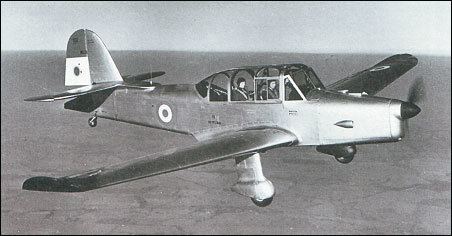
An unusual design feature was the provision for three seats. While the instructor and pupil were equipped with dual controls in a side-by-side arrangement in the front, a second pupil sat in the rear seat without controls to receive "air experience". Both pupils could communicate with the instructor. Night flying training was to be carried out in daylight by means of amber screens incorporated into the canopy and the use of special goggles. The amber screens were folded back when not in use.
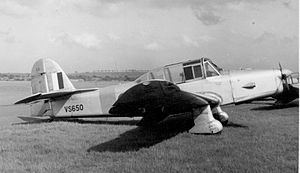
Several hundred Prentices were ordered for RAF use. Since the Percival factory was concentrating on production of the Percival Proctor and the Merganser light transport aircraft, production was sub-contracted to the Blackburn Aircraft works at Brough.
Operational service
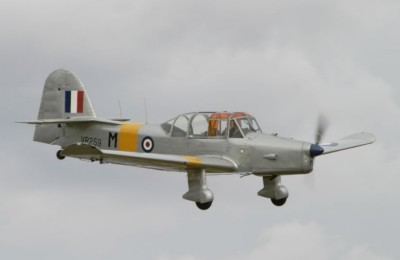
After these modifications, the Prentice was passed into RAF service, initially with the regular Flying Training Schools (FTS) including the RAF College, Cranwell where they replaced the remaining de Havilland Tiger Moths. Later deliveries went to the Reserve Flying Schools (RFS). The type was used as a pilot trainer until 1952 at the RAF College where it was replaced by the de Havilland (Canada) Chipmunk and in late 1953 at the other schools, when it was replaced by the Percival Provost. Two Air Signals Schools also operated the type to train air signallers, until the last were withdrawn from No.1 ASS at RAF Swanton Morley, Norfolk, in mid 1956.
Civilian operations
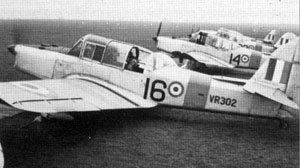
252 redundant RAF Prentices were later bought in 1956 by Aviation Traders Ltd, a company owned by Freddie Laker. and were stored at Stansted and Southend. Most were eventually scrapped but 28 were converted for civil use with two seats and two jumpseats behind the two pilots' seats, separated by a structure which housed the original 4-channel radio. This conversion had quite poor performance with four passengers. One aircraft (G-AOKL) was based at Stansted Aerodrome near London around 1963 and used by the Parachute Club for parachuting with at least three jumpers. One aircraft was converted to a seven-seat layout for pleasure flights. One (G-AOPL) was acquired from Shackleton Aviation at Sywell by Captain Jon Cousens, a Desert Intelligence Officer in the Trucial Oman Scouts and flown to Sharjah in 1967; later being flown on to South Africa where it remained until it ceased flying.
The aircraft had a poor performance with any load at high temperatures and initially had poor spin recovery.
Forty-two aircraft were built under licence by Hindustan Aircraft for the Indian Air Force.
Variants
Operators
Airworthy survivors
Aircraft On Display
An ex-RAF Prentice N1041P is under restoration.
One Prentice T.1 aircraft is on display. Another one at the Escuela de Educación Técnica Aeronáutica Jorge Newbery.
Another Indian Air Force Prentice IV 3381 is on static display.
Prentice T.Mk.1 VS316/G-AOMF/ZK-DJC is on static display.
Specifications (T.1)
Data from
General characteristics
Performance
